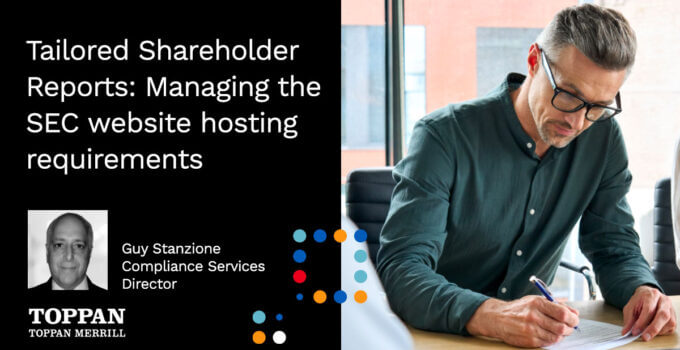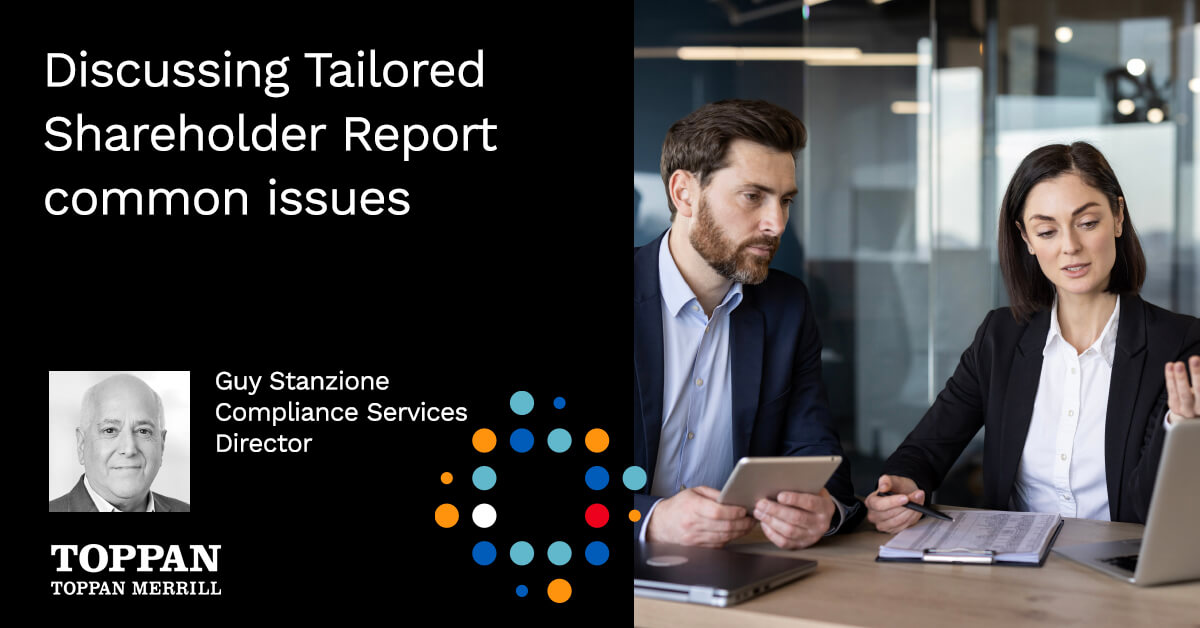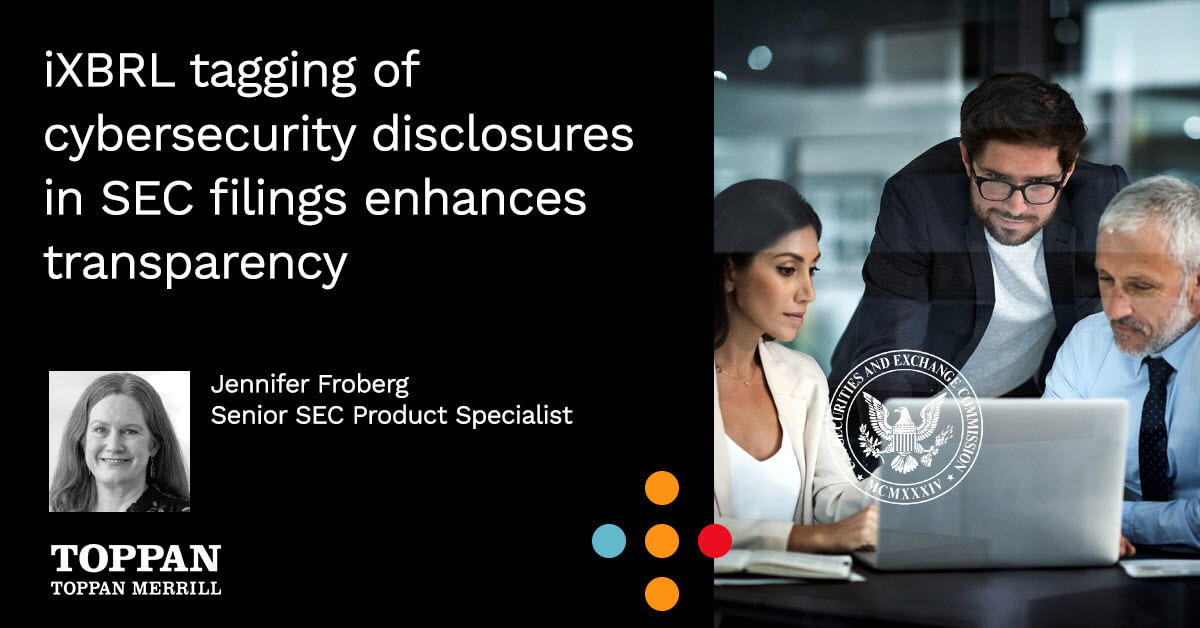The new Tailored Shareholder Report Rule delivers on each of these goals.
The Tailored Shareholder Report (TSR) rule impacts all investment companies registered on Form N-1A, including retail mutual funds, exchange-traded funds (ETFs) and mutual funds offered through variable products. The adopting rule requires open-end management investment companies to transmit concise and visually engaging annual and semi-annual reports to shareholders highlighting key information, that is particularly important for retail investors, to assess and monitor their fund investments.
Information that may be more relevant to financial professionals and investors who desire more in-depth information will no longer appear in funds’ shareholder reports, but will be available online, delivered free of charge upon request, and filed on a semi-annual basis on Form N-CSR.
No longer will recipients receive a generic report, rather each recipient receives a tailored report based on their share class investment.
As with all SEC rules announced in recent years, add in the Inline XBRL (iXBRL) tagging requirement. Together these changes are intended to:
- Increase retail investors’ understanding of their investment fund performance
- Increase access to their specific investment performance information, and
- Make the information database searchable, allowing for detailed analysis
These are a lot of changes for any business to deal with; rewriting and reformatting a single report that covers all share classes and oftentimes, multiple funds, to prepare class-specific individual reports in a completely new format. While the primary focus is on the document changes, few are focusing on the significant impact the Tailored Shareholder Report Rule has on online access, with the rule requiring significant changes to how investor fund information is displayed on your website.
Tailored Shareholder Report rule impact on website hosting
The new rule with its focus on tailored information also impacts the display of digital information. Less than five years ago, the SEC passed Rule 30e-3, allowing funds to fulfill the shareholder report transmission requirement with a Notice alerting investors of the website availability of materials and posting the information online.
Rule 30e-3 allowed funds and variable products to stop mailing fund reports that varied in size but were often dozens of pages long. The newly formatted and shorter Tailored Shareholder Reports will follow a paper-based delivery model, with mail being the default, with the documents available online, using a layered disclosure framework, by the share class along with additional information, such as financial statements, that were traditionally included in the shareholder reports.
Challenges funds faced when complying with Rule 30e-3 were adhering to the 1-click access rule, and for all funds, other than money market funds, hosting the first and third quarter portfolio holdings. Although Rule 30e-3 is being rescinded for open-end funds, these elements, along with layered disclosure, similar to the Fund Summary Prospectus framework, present new demands for website compliance. Similar to the guidelines established for Summary Prospectus, the Commission is introducing a layered approach to the disclosure of portfolio holdings, where a graphical representation of holdings continues to appear in the shareholder report, and more detailed and current portfolio holdings information, which currently appears in the shareholder report, is available online and upon request. Investors must be able to access their relevant fund information within a minimum number of mouse rule clicks similar to that of the Summary Prospectus 2-click requirement. Every share class within each fund will produce an Annual Report and Semi-Annual Report, which must be displayed, along with the more detailed disclosure on a website.
For a fund complex with 20 funds, each with 5 share classes, the number of documents on a website increases substantially, when you consider each tailored report and the corresponding detailed disclosure, keeping user experience for site navigation in mind.
What website compliance looks like
Looking deeper into website hosting implications for an SEC-compliant website, there are other items to consider when making site adjustments for the changes required by the rule.
- Linking form N-CSR – In addition to report availability the additional content with the annual or semiannual Form N-CSR must be linked to the applicable tailored shareholder report to be accessed within 2-clicks
- Maintaining additional document types – Even with the rescission of Rule 30e-3 for open-end funds, for all funds, except money market funds, the First and Third Quarter Holdings of the fund must be hosted on a site, maintaining one full year of performance reporting.
- Timelines and deadlines – Your tailored shareholder reports and content within the N-CSR must be posted to your website within 60 days after the period end. Consistent with current filing requirements, the N-CSR must be filed within 70 days after the period.
- Document navigation and branding – As with the printed version, the tailored shareholder reports posted on your website should be visually engaging and easy to navigate.
- ADA compliance – Lastly, the SEC does not oversee ADA compliance and doesn’t not require all electronic material to be ADA-accessible. ADA compliance includes a variety of accessibility standards such as the inclusion of a text reader application option, employment of color contrast and color use standards and all links, images, and videos have alternative text defining the asset for the visually impaired. Other website accessibility tips include simple page organization and writing at a 5th-grade content reading level.
Here is an example of how the experts at Toppan Merrill organize digital filing displays so funds are fully compliant.
Approaching the topic of website compliance
Compliance with these mandates requires significant resources, but non-compliance isn’t an option. Our advice to our clients is to begin planning for the transition now.
Given the significant changes required by the new Tailored Shareholder Report Rule, you may want to consider an integrated end-to-end solution from an SEC filing agent.
Rely on the experts at Toppan Merrill
Toppan Merrill has been helping funds navigate the ever-changing waters of SEC filings and disclosures for decades. We have experts working hard to ensure clients are on top of the most minuscule regulations. Our web service department has developed specialized website architectures that offer low-touch management of compliant filing displays through the Content Control platform.
If you have any questions about the new Tailored Shareholder Reports Rule, client communications systems or other matters concerning the 1940 Securities Act, the experts at Toppan Merrill are available to help.



